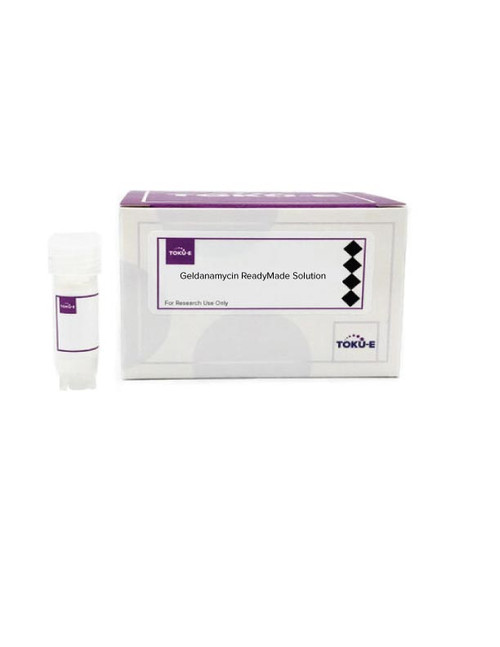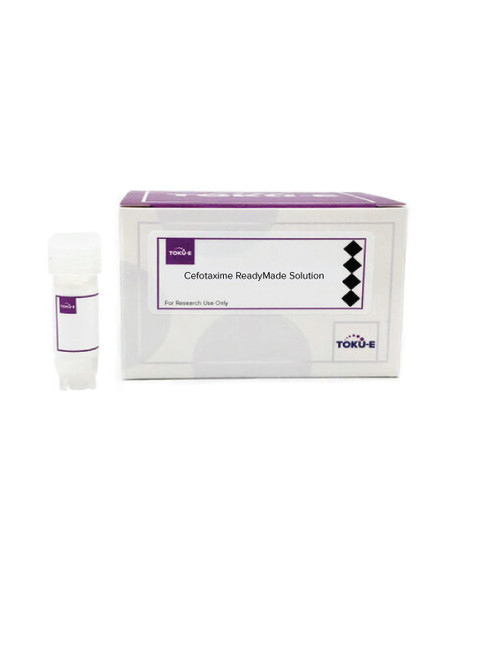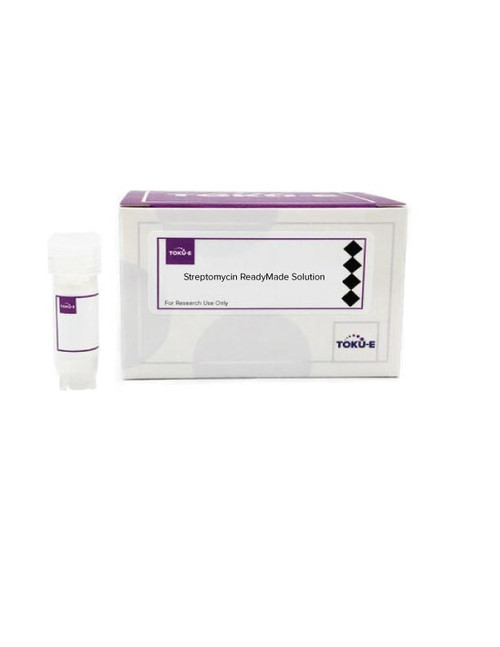Geldanamycin ReadyMadeTM solution is provided as a sterile-filtered solution of Geldanamycin formulated in DMSO at a concentration of 1 mg/ml. It has been filter-sterilized using a 0.22 μm filter.
Geldanamycin is a 1,4-benzoquinone ansamycin antibiotic which inhibits the stress-induced chaperone heat shock protein 90 (Hsp90). All derivates that can be synthesized from this compound also share its HSP90 inhibition, but very in toxicity and water solubility. It is a natural product and was derived from Streptomyces hygroscopicus. The compound can be used in cancer research as an anti-tumor agent. It can also be used in monocyte and myeloid cell research during the cell differentiation and maturation phases of the workflow. Geldanamycin is soluble in DMSO and methanol but insoluble in water.
We also offer:
- Geldanamycin (G005)
| Mechanism of Action | Geldanamycin binds specifically to the heat shock protein Hsp90 and to its endoplasmic reticulum homologue GP96, and thus interferes with conformational maturation of proteins and the cellular stress response. In addition, it is a potent inhibitor of the nuclear hormone receptor family. |
| Spectrum | Moderately active in vitro against bacteria, protozoa, fungi. |
| Cancer Applications |
In normal cells, Hsp90 stabilizes and folds proteins, however, in tumor cells, Hsp90 activity helps stabilize mutated growth factor and signal proteins which facilitate tumor growth. To prevent this complication, Geldanamycin binds to and inactivates Hsp90 in cancerous cells leading to degradation of cancer cell proteins. Geldanamycin was used to synthesize 2 new geldanamycines: 17-(tryptamine)-17-demethoxygeldanamycin (2) and 17-(5′-methoxytryptamine)- 17-demethoxygeldanamycin. Findings showed these derivatives had selective cytotoxicity toward some cancer cell at a lower concentration, so future studies could be useful (Taechowisan et al, 2020) |
| Microbiology Applications | Geldanamycin can inhibit the replication of severe acute respiratory syndrome coronavirus. Its antiviral mechanism appears to be broad-spectrum antiviral activity. It can also inhibit the replication of Herpes SImplex Virus Type 1 in vitro (Li et al, 2004). |
| Molecular Formula | C29H40N2O9 |
| Solubility | |
| References |
DeBoer C, Meulman PA, Wnuk RJ and Peterson DH (1970) GEldanamycin, a new antibiotic. J. Antibiotics 23(9):442-447 Franke J, Eichner S, Zelinger C and Kirschning A (2013) Targeting heat-shock-protein 90 (Hsp90) by natural products: Geldanamycin, a show case in cancer therapy. Natural Product Reports 30:1299-1323 Kai E (2001) Geldanamycin: The prototype of a class of antitumor drugs targeting the heat shock protein 90 family of molecular chaperones. Cell Stress Chaperones 6(2):105-112 Li YH, Tao PZ, Liu YZ, Jiang JD (2004) Geldanamycin, a ligand of heat shock protein 90, inhibits the replication of herpes simplex virus type 1 in vitro. Antimicrob Agents Chemother.48(3):867-72 PMID 14982777 Taechowisan T, Samsawat T, Puckdee W, Phutdhawong WS (2020) Cytotoxicity activity of Geldanamycin derivatives against various cancer cell lines. J. Appl. Pharm. Sci. 10(06):012-021 |








